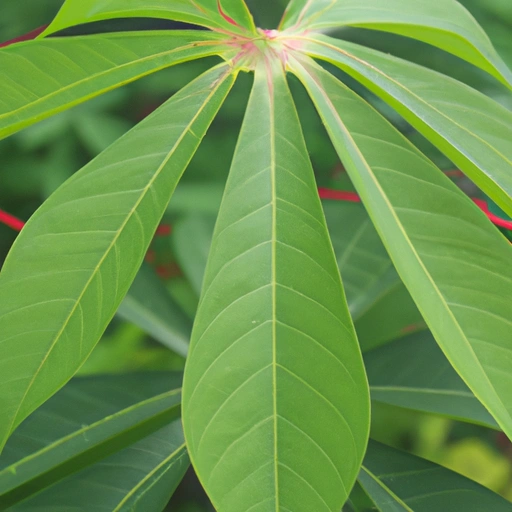Cassava Leaf
Description

Cassava leaf, known scientifically as Manihot esculenta, is the foliage of the cassava plant, which is widely cultivated in tropical and subtropical regions. Cassava leaves are deeply green, have a heart shape, and are a popular ingredient in various cuisines around the world. They are often used in a finely ground or pounded form and can be cooked in a multitude of ways.
Common uses
Cassava leaves are commonly used in soups, stews, and sauces, often as a thickening agent or to add a robust green color to dishes. They are sometimes also consumed on their own as a vegetable side dish when boiled or steamed and seasoned.
Nutritional value
Calories
Per 100 grams, cassava leaves contain approximately 37 calories (155 kJ).
Protein
Cassava leaves are rich in protein, offering about 3.7 grams per 100 grams.
Fat
These leaves are low in fat, with only 0.6 grams per 100 grams.
Carbohydrates
Carbohydrates in cassava leaves tally up to about 6.4 grams per 100 grams.
Vitamins
They are an excellent source of vitamins, particularly vitamin K, vitamin C, and vitamin A.
Minerals
Rich in minerals, cassava leaves provide calcium, iron, potassium, and magnesium.
Health benefits
Consuming cassava leaves can contribute to overall health, thanks to their high vitamin and mineral content. They promote healthy blood clotting, boost the immune system, and aid in maintaining good vision.
Potential risks
Raw cassava leaves contain cyanogenic glycosides, which can release cyanide when eaten. It is important to cook them properly to reduce the risk of poisoning. People with kidney or liver conditions should consume cassava leaves with caution.
Common recipes
Popular dishes include cassava leaf stew, a favorite in West Africa, and cassava leaf soup, which is often enjoyed with rice.
Cooking methods
Cassava leaves are typically boiled, steamed, or simmered in sauces to ensure they are thoroughly cooked to neutralize toxins.
Pairing with other ingredients
They pair well with robust flavors such as garlic, chili, coconut milk, and various meats and seafood.
Summary
Cassava leaf is a nutritious and versatile ingredient used in a variety of dishes across the globe. It provides essential nutrients and can be prepared using different methods. However, it must be cooked properly to ensure safety. With its unique taste and texture, cassava leaf can add an exotic touch to any meal.